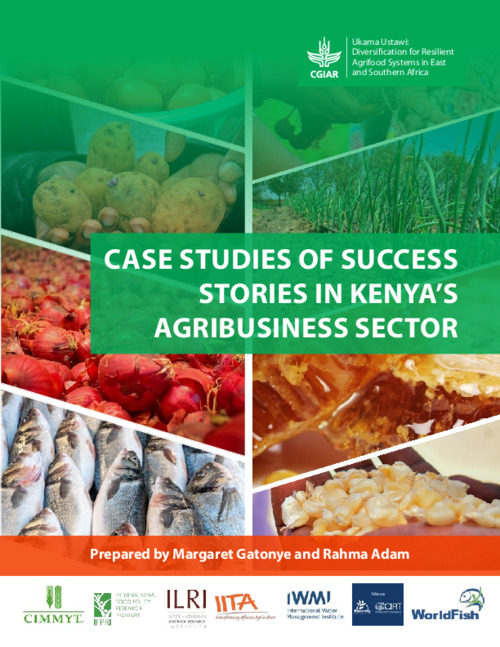Case studies of success stories in Kenya’s agribusiness sector

Agribusinesses are an integral part of the Kenyan economy and, while facing many challenges, have shown to be adaptable to local and international conditions. These agribusiness case studies success stories provide insights into the constraints and opportunities of the sector. Most importantly, how CGIAR research centers can understand the different roles of women, men, and youth in agribusiness; highlight the constraints, barriers, and opportunities along the value chain; and exemplify the experiences and successes of seven agribusiness producers. Interviewees were selected based on attendance of the workshop and through referrals. The agribusiness case study success stories presented offer several lessons in opportunities, challenges, and solutions for agribusiness. Major common challenges are market access, transportation, and postharvest pricing. Market access has been exacerbated by the impact COVID-19, particularly international markets. Transporting produce to market— even to local markets—also poses challenges. Produce can spoil before reaching markets if not preserved for long distances,
or if transported over poor roads. Low prices, especially from lower-priced government-subsidized goods, make it difficult for farmers to earn profits and reinvest in their agribusinesses. This can be offset to some degree by diversification, such as by growing various crops alongside apiculture or aquaculture, or by investing in other agrobusiness lines that yield regular income. Value addition, such as the use of cassava to make flour, chips, and crackers, is another avenue by which to enhance profits.
Other challenges are lack of affordable or accessible essential tools and technologies, such as machines for weighing and sorting. Freezers are also needed; while there are low-tech preservation techniques, such as salting or icing, these are not optimal. Climate change exacerbates the difficulty of preservation, as higher temperatures mean produce spoils more rapidly. Climate change also contributes to drought and the spread of disease.
Actual and proposed agribusiness solutions for some of these challenges are water reservoirs, crop diversification and rotation for soil health and disease control, trainings, and government-provided subsidies given directly to farmers—thereby bypassing current issues with cartels having access to these subsidies—to enhance access to inputs.
In addition to these strategies, farmers have found other solutions that bring them together, such as by forming associations that provide trainings and workshops; sharing resources to farmer groups; helping to subsidize certain costs, such as seeds, to other farmers; and collective bargaining of market prices.
Permalink
Date Available
Type
Publisher
Countries
Copyright
CC-BY-NC-4.0
Research Themes
Language